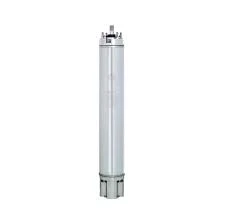Dec . 11, 2024 10:58 Back to list
Guide to Setting Up a Submersible Deep Well Pump Efficiently and Effectively
How to Install a Submersible Deep Well Pump
Installing a submersible deep well pump can be a daunting task, but with the right tools and a clear understanding of the process, you can accomplish it successfully. A submersible pump is designed to be submerged in water, and it's efficient in drawing water from deep underground sources. This guide will walk you through the essential steps to install a submersible deep well pump.
Step 1 Gather Necessary Tools and Materials
Before beginning the installation, ensure you have all the necessary tools and materials. You'll need
- A submersible deep well pump - A drop pipe (typically PVC) - Well casing and screen (if not already installed) - Wiring and electrical components - A surge protector - A wrenches set - A pipe cutter - Teflon tape - A shovel (if needed for excavation) - A safety harness or rope (in case you need to climb in or out of the well)
Step 2 Prepare the Well
If you are starting from scratch, it is crucial to have a properly drilled well. The well should be finished with casing to prevent contaminants from entering the water supply. If you're replacing an existing pump, remove it carefully from the well. Take note of the depth of the water level and the pump and ensure the well is sufficiently clean and free from debris.
Step 3 Inspect the Pump
Before installation, inspect your new submersible deep well pump. Check for any shipping damage and ensure that the specifications match your needs, especially regarding the depth of installation and the required flow rate. Familiarize yourself with the manufacturer’s installation instructions.
Step 4 Assemble the Pump and Pipe
Using Teflon tape, wrap the threads on the pump to ensure a tight seal. Attach the pump to the drop pipe securely, ensuring that all connections are leak-free. If your pump comes with a safety cable, attach it to the drop pipe as well. It’s essential to have this safety measure in place to prevent the pump from falling into the well if the pipe were to break.
how to install a submersible deep well pump

Step 5 Wiring the Pump
Wiring is a critical step in the installation process. Make sure to disconnect the power supply before working with any electrical components. Follow the manufacturer’s wiring diagram to connect the pump’s wiring to the power source. Consult with a licensed electrician if you’re unsure about handling electrical connections. Every connection must be waterproof to avoid short circuits.
Step 6 Lowering the Pump into the Well
Attach the drop pipe to the pump and carefully lower it into the well. Keep the pipe straight and avoid twisting it. When the pump reaches the water level, ensure that the pump is submerged adequately according to the manufacturer’s specifications. As you lower the pump, be cautious of the wiring and any cables used to guide it.
Step 7 Backfill and Secure the Well
Once the pump is properly positioned, it’s important to secure the well to prevent any debris from entering, and to protect the pump assembly. If you’ve dug any area around the well, backfill it with soil. Make sure to compact the soil around the casing to reduce the risk of collapse.
Step 8 Testing the Pump
Before you cover everything up, it’s time to test the pump. Turn the power back on and check for leaks around all connections. Listen for unusual noises that may indicate issues with the pump operation. Open a faucet that’s fed by the pump to check the flow rate and quality of the water. Monitor for a few minutes to ensure everything is functioning properly.
Conclusion
Installing a submersible deep well pump may seem challenging, but following these steps can make the process more manageable. Always prioritize safety and follow local regulations concerning well installation. If you feel uncomfortable with any step of the process, consider hiring a professional to assist. A properly installed submersible pump can provide you with a reliable water source for years to come.
-
Submersible Water Pump: The Efficient 'Power Pioneer' of the Underwater World
NewsJul.01,2025
-
Submersible Pond Pump: The Hidden Guardian of Water Landscape Ecology
NewsJul.01,2025
-
Stainless Well Pump: A Reliable and Durable Pumping Main Force
NewsJul.01,2025
-
Stainless Steel Submersible Pump: An Efficient and Versatile Tool for Underwater Operations
NewsJul.01,2025
-
Deep Well Submersible Pump: An Efficient 'Sucker' of Groundwater Sources
NewsJul.01,2025
-
Deep Water Well Pump: An Efficient 'Sucker' of Groundwater Sources
NewsJul.01,2025
-
 Submersible Water Pump: The Efficient 'Power Pioneer' of the Underwater WorldIn the field of hydraulic equipment, the Submersible Water Pump has become the core equipment for underwater operations and water resource transportation due to its unique design and excellent performance.Detail
Submersible Water Pump: The Efficient 'Power Pioneer' of the Underwater WorldIn the field of hydraulic equipment, the Submersible Water Pump has become the core equipment for underwater operations and water resource transportation due to its unique design and excellent performance.Detail -
 Submersible Pond Pump: The Hidden Guardian of Water Landscape EcologyIn courtyard landscapes, ecological ponds, and even small-scale water conservancy projects, there is a silent yet indispensable equipment - the Submersible Pond Pump.Detail
Submersible Pond Pump: The Hidden Guardian of Water Landscape EcologyIn courtyard landscapes, ecological ponds, and even small-scale water conservancy projects, there is a silent yet indispensable equipment - the Submersible Pond Pump.Detail -
 Stainless Well Pump: A Reliable and Durable Pumping Main ForceIn the field of water resource transportation, Stainless Well Pump has become the core equipment for various pumping scenarios with its excellent performance and reliable quality.Detail
Stainless Well Pump: A Reliable and Durable Pumping Main ForceIn the field of water resource transportation, Stainless Well Pump has become the core equipment for various pumping scenarios with its excellent performance and reliable quality.Detail
